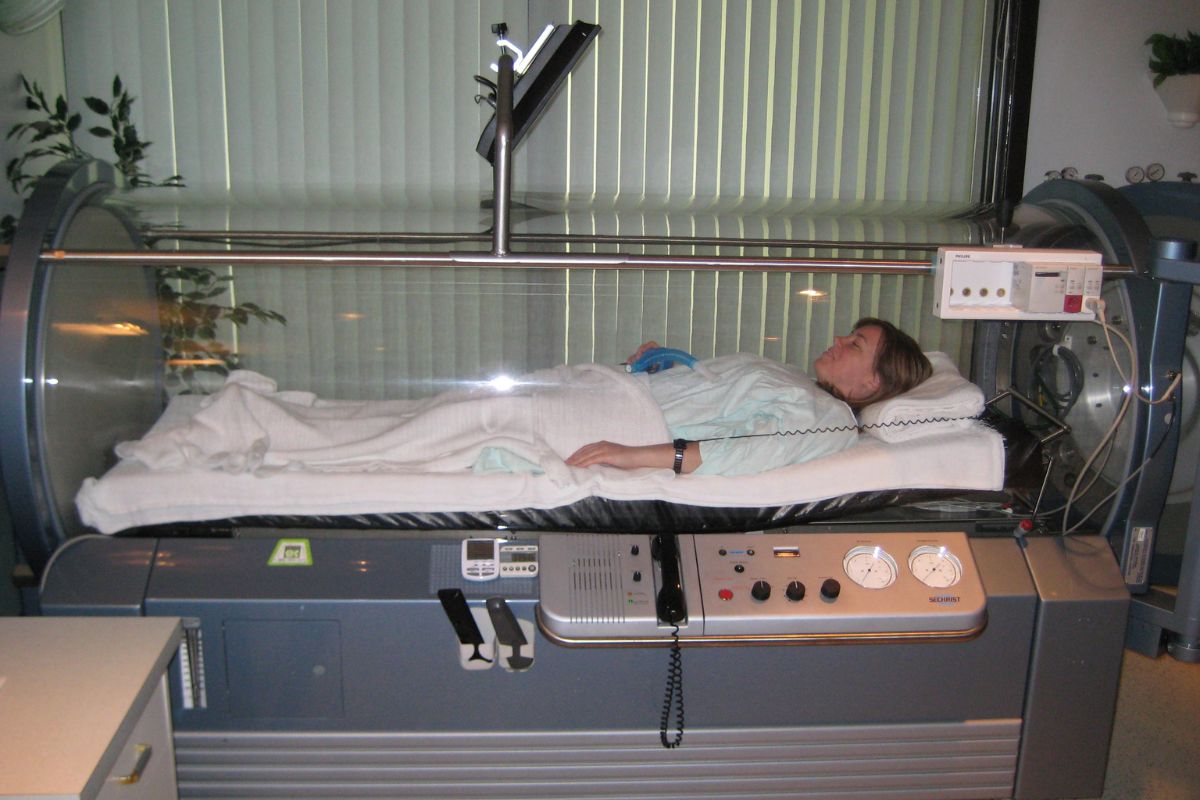
What exactly is a hyperbaric chamber? Hyperbaric chambers are specialized medical devices designed to deliver pure oxygen at higher-than-normal atmospheric pressures. Why use them? These chambers help treat various conditions, from decompression sickness in divers to chronic wounds and carbon monoxide poisoning. How do they work? By increasing oxygen levels in the blood, they accelerate healing and improve overall health. Are they safe? Generally, yes, but they must be used under medical supervision to avoid potential risks. Curious about more? Here are 45 intriguing facts about hyperbaric chambers that will expand your understanding of this fascinating medical technology.
What is a Hyperbaric Chamber?
Hyperbaric chambers are specialized medical devices used to administer hyperbaric oxygen therapy (HBOT). This therapy involves breathing pure oxygen in a pressurized environment, which can help treat various medical conditions. Let's dive into some fascinating facts about these chambers.
- Hyperbaric chambers can increase atmospheric pressure up to three times higher than normal air pressure.
- The increased pressure allows the lungs to gather more oxygen than would be possible breathing pure oxygen at normal air pressure.
- HBOT can help treat decompression sickness, a hazard of scuba diving.
- These chambers are also used to treat serious infections, bubbles of air in blood vessels, and wounds that won't heal due to diabetes or radiation injury.
- Hyperbaric oxygen therapy was first used in the early 20th century.
- The therapy can enhance the body's natural healing process by increasing oxygen levels in the blood.
- HBOT can reduce swelling and inflammation in tissues.
- It can also promote the growth of new blood vessels.
- Hyperbaric chambers come in two types: monoplace and multiplace.
- Monoplace chambers are designed for one person and are typically made of clear acrylic.
- Multiplace chambers can accommodate multiple people and are often used in hospitals.
- Patients in multiplace chambers breathe oxygen through masks or hoods.
- The therapy sessions, known as "dives," can last from 30 minutes to two hours.
- HBOT is used as an adjunctive therapy for carbon monoxide poisoning.
- It can also help treat severe anemia by increasing oxygen delivery to tissues.
- Hyperbaric chambers can aid in the treatment of brain abscesses.
- They are used to treat necrotizing soft tissue infections, also known as flesh-eating bacteria.
- HBOT can improve outcomes for patients with thermal burns.
- The therapy can help reduce the effects of radiation therapy on healthy tissues.
- Hyperbaric chambers can be used to treat crush injuries and compartment syndrome.
- HBOT can enhance the effectiveness of certain antibiotics.
- The therapy can help treat chronic refractory osteomyelitis, a persistent bone infection.
- Hyperbaric chambers are used in sports medicine to speed up recovery from injuries.
- Some professional athletes use HBOT to enhance performance and endurance.
- The therapy can help reduce muscle fatigue and soreness.
- HBOT can improve cognitive function in patients with traumatic brain injuries.
- It can also help treat post-traumatic stress disorder (PTSD).
- Hyperbaric chambers can be used to treat Lyme disease.
- The therapy can help improve symptoms of multiple sclerosis.
- HBOT can aid in the treatment of fibromyalgia.
- It can also help alleviate symptoms of chronic fatigue syndrome.
- Hyperbaric chambers are used in cosmetic medicine to promote healing after plastic surgery.
- The therapy can help reduce the appearance of scars.
- HBOT can improve skin graft survival.
- It can also help treat radiation-induced tissue damage.
- Hyperbaric chambers can be used to treat sudden hearing loss.
- The therapy can help improve vision in patients with retinal artery occlusion.
- HBOT can aid in the treatment of certain types of migraines.
- It can also help treat cluster headaches.
- Hyperbaric chambers can be used to treat autism spectrum disorders.
- The therapy can help improve symptoms of cerebral palsy.
- HBOT can aid in the treatment of stroke.
- The therapy can help improve outcomes for patients with spinal cord injuries.
- Hyperbaric chambers can be used to treat peripheral arterial disease.
- The therapy can help improve symptoms of chronic pain conditions.
Final Thoughts on Hyperbaric Chambers
Hyperbaric chambers offer a fascinating blend of science and health benefits. From treating decompression sickness to enhancing athletic performance, these chambers have a wide range of applications. They work by increasing oxygen levels in the body, which can accelerate healing and reduce inflammation. While they’re not a cure-all, the potential benefits are impressive. Always consult a healthcare professional before diving into hyperbaric therapy.
Whether you’re an athlete looking to boost recovery or someone seeking alternative treatments for chronic conditions, hyperbaric chambers might be worth exploring. They’re not just for scuba divers anymore. With ongoing research, who knows what other benefits we might discover in the future? Keep an eye on this evolving field; it’s bound to bring more surprises.
Was this page helpful?
Our commitment to delivering trustworthy and engaging content is at the heart of what we do. Each fact on our site is contributed by real users like you, bringing a wealth of diverse insights and information. To ensure the highest standards of accuracy and reliability, our dedicated editors meticulously review each submission. This process guarantees that the facts we share are not only fascinating but also credible. Trust in our commitment to quality and authenticity as you explore and learn with us.
